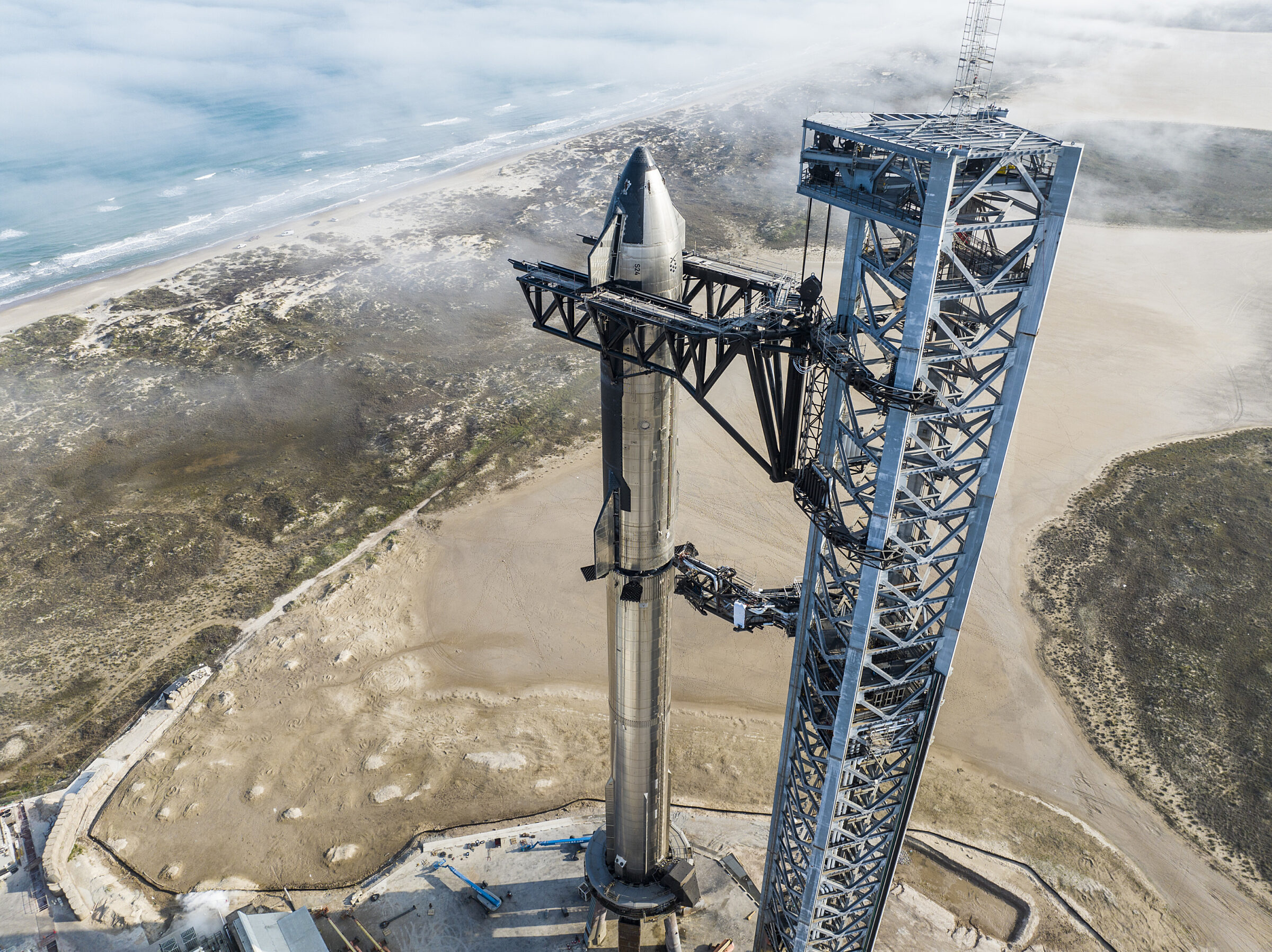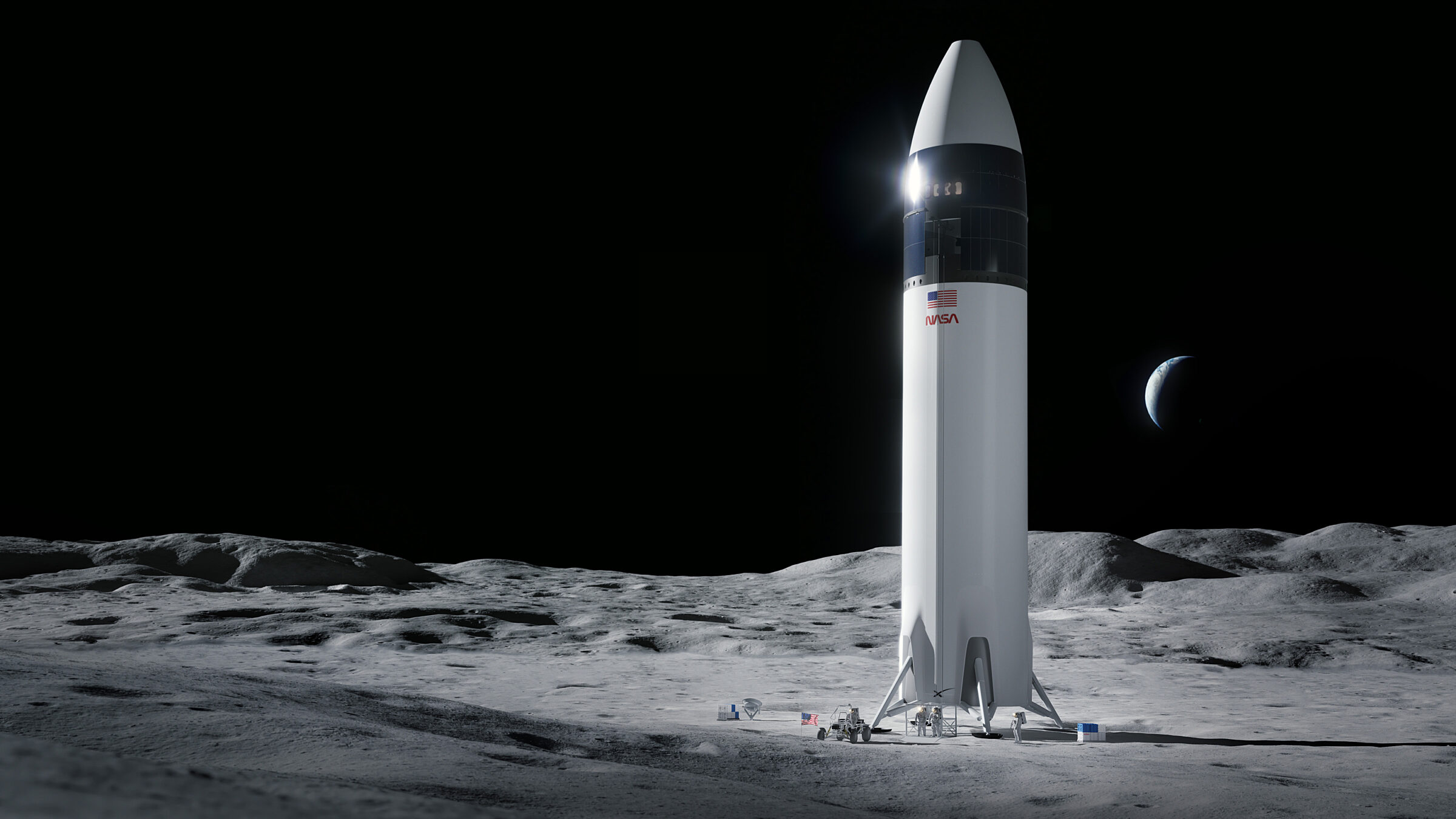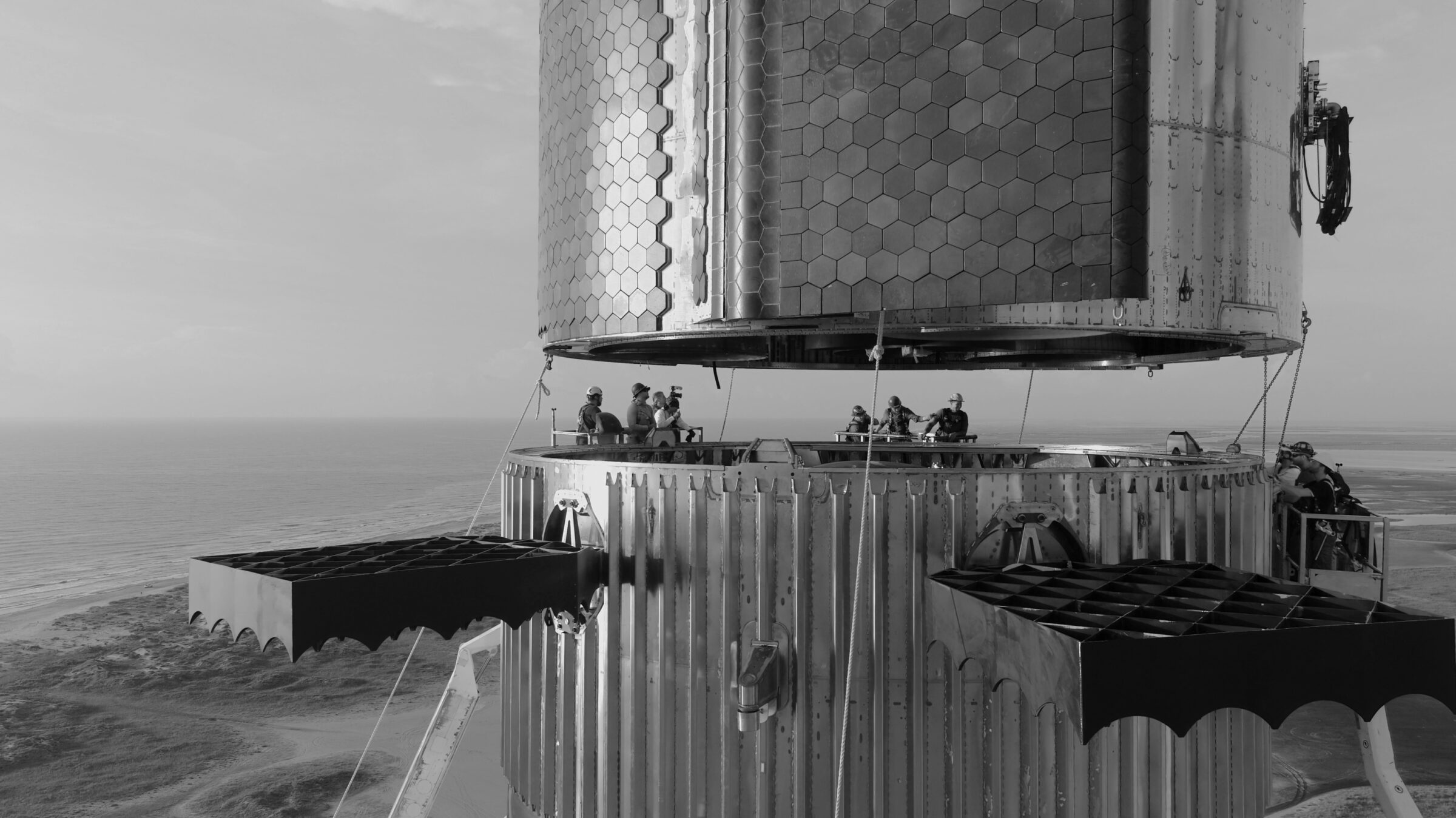Asa Stahl • Jul 15, 2024
How soon will Starship fly?
One rocket could decide how soon humanity returns to the Moon — and maybe one day sets foot on Mars. Though still in testing, SpaceX’s Starship has already inaugurated a new era in spaceflight as the largest, most powerful rocket ever flown. In the coming years, it will land astronauts on the Moon, help establish a sustainable human presence beyond Earth, and make space more accessible to everything from telescopes to tourists. But years of compounding delays also loom over Starship. More might still be announced. With so much riding on one rocket, what’s left for Starship before it’s mission-ready?

The rocket
Starship is made up of two parts: the Super Heavy booster and the spacecraft upper stage, which is also called Starship (or sometimes just “Ship”). Fully stacked and fueled, the whole thing is about as tall as two jumbo jets stacked end-to-end and about 10 times as heavy. It’s not size that makes Starship special, though, but the power it gives for the price. Starship will be able to carry about as much to orbit as the rocket that launched the Apollo missions, but at a tenth of the cost or less.
To the Moon and beyond
This is part of why NASA selected Starship for the Artemis III Moon landing mission. In its current form, scheduled for September 2026, Artemis III would mark the first time U.S. astronauts have set foot on the Moon in over 50 years. But the mission involves more than just a single Starship. After launching one Starship into orbit, SpaceX will have to send a whole series of other Starships to dock and transfer fuel to the first spacecraft. Only when the orbiting Starship is fully fueled will astronauts launch on NASA’s Orion spacecraft to meet with it. The astronauts will transfer to Starship, head off to the Moon, and return to Orion on their way back.
Multiple issues are holding up Artemis III. The first is the Orion spacecraft, which has problems with its heat shield, life support, and abort system that need to be addressed. These complications already led NASA to delay Artemis II, which in turn pushed back Artemis III. But even if Orion had been ready on schedule, the Moon landing would likely have been held up by hiccups with the mission’s spacesuits — and by Starship, which has also been plagued by delays.

There is more on the line for Starship than just Artemis III. The rocket is set to transform the landscape of low Earth orbit by making launches easier. What may be the first private space station, Voyager Space’s Starlab, is slated to go up on Starship in 2028. Satellite operators have signed up with Starship, too, and SpaceX itself is hoping to use the launch vehicle to deploy its Starlink satellites.
By making space more accessible, Starship will also change what sort of science is possible in orbit. The James Webb Space Telescope, for example, had to be designed with lightweight materials that folded up to fit within its Ariane 5 launch vehicle. But if Starship’s large payload capacity and low cost had been an option at the time, NASA would have been able to build JWST simpler, faster, and cheaper. And while NASA has not said as much, its contracts with Starship are an investment. The space agency will likely rely on Starship as it works to establish an exploratory base on the Moon. As the rocket gets more advanced, it could then set the foundation for the eventual human exploration of Mars.
Starship’s to-do list
So far, Starship has flown four test flights with both booster and spacecraft attached. The first time, the rocket disintegrated after just a few minutes. The second time, it managed to separate the Super Heavy and Ship stages, but both exploded before finishing their missions. Only on the third test did Ship make it to space, where it successfully performed a few important tests before blowing up during re-entry. Finally, on June 8, 2024, the fourth and most recent flight test made it all the way back to Earth.

Starship still has much left to prove. Since the spacecraft needs to be refueled in orbit to go to the Moon or Mars, NASA wants to see Starship perform a propellant transfer demo in early 2025. That would mean two launches: one to put a Starship into orbit, then another to catch up with the first rocket, dock, and load propellant into it. For the actual Artemis III mission, somewhere between 4-20 Starships would be needed to transfer enough fuel for one Starship to make it to the Moon — exactly how many won’t be clear until SpaceX flies the demo.
SpaceX also needs to complete and test the various modifications to Starship’s base model that will turn it into Starship Human Landing System (HLS), the version that will actually land on the Moon. Unlike the Starships that have launched in test flights so far, Starship HLS will have life support, a docking system, landing legs, and an elevator for astronauts to reach the surface. Most of these modifications have been tested in some way already.
Finally, once everything else is set, SpaceX will perform a dry rehearsal of Artemis III. It will land Starship HLS on the Moon without a crew and then show that the rocket can take off to return to low-Earth orbit.

Starship test flight no. 5
The next immediate step for Starship will be another test flight. According to SpaceX CEO Elon Musk, this flight may launch in early August 2024, once issues with Starship’s heat shield are resolved. SpaceX has hinted that the flight may return its booster to be caught with the launch tower’s arms.
Artemis III: better late than never?
If any one of Starhip’s milestones is delayed much further, Artemis III will be, too. Many already consider a 2026 launch date for Artemis III to be impractical. In 2023, the United States Government Accountability Office estimated that Artemis III would not launch before 2027, and other sources have said the mission is most likely to happen between 2028 and 2032. It’s also possible that NASA may keep Artemis III closer to a 2026 launch date, but limit the mission to Orion and Starship docking in low-Earth orbit. In that case, the crewed Moon landing could be pushed to Artemis IV.
When Starship is finally ready, its effect will be transformative. The rocket won’t solve every problem in space exploration, including those surrounding NASA/ESA’s Mars Sample Return, and there is a long road ahead before it will be ready to go to Mars. But for at least the next decade, much of humanity’s future in space will depend on Starship.
The Time is Now.
As a Planetary Defender, you’re part of our mission to decrease the risk of Earth being hit by an asteroid or comet.
Donate Today

 Explore Worlds
Explore Worlds Find Life
Find Life Defend Earth
Defend Earth

